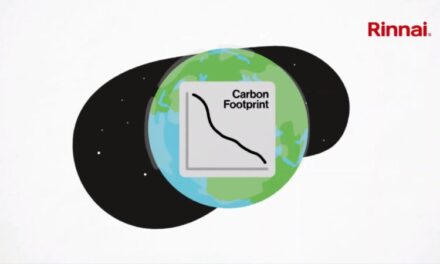As the world strives towards the ambitious targets set at COP26, all industries will have a role to play in decarbonisation and net zero. The energy industry, understandably, bears significant responsibility. The International Energy Agency (IEA) notes that, in order to reach net zero by 2050, global CO2emissions from energy and industry will need to decline by 41% from their 2019 levels over the next nine years. Step forward low-carbon hydrogen, which can offer a solution to this vital transition.
This is because low-carbon hydrogen can deliver key decarbonisation benefits across a variety of high-emission industries. However, as demand mounts for clean energy, investment in these hydrogen solutions will be essential.
Achieving total decarbonisation
Low-carbon hydrogen will be crucial in meeting the landmark net zero targets set at COP26. This is primarily due to the belief that it will be able to fuel the 15% of the economy which is difficult to decarbonise. Hydrogen can offer fuel-hungry industries, such as shipping or heavy goods transport, a clean alternative. For example, the shipping industry currently emits around 940 million tonnes of CO2 each year making it responsible for 2.5% of global greenhouse gas emissions. However, it is predicted that by 2050, clean hydrogen could account for 80% of the shipping industry’s energy demand, helping to mitigate its environmental impact.
Clearly, low-carbon hydrogen can have a key role in helping industries make the urgent transition to clean energy. However, the different types of clean hydrogen offer varying benefits. ‘Blue’ hydrogen, which is derived from natural gas and makes use of CO2 emission capturing processes, can offer a cleaner solution which is easy to deploy at a large scale. However, many have raised concerns about how green this form of hydrogen is, with the process only able to capture around 75-90% of the CO2 produced.
Alternatively, ‘green’ hydrogen can offer a far cleaner solution. This form of low-carbon hydrogen is produced by electrolysis and powered by renewable energy with no CO2 produced. However, although the IEA estimates costs of producing green hydrogen could fall by 30% in 2030, it currently presents a very costly option. Ultimately, as demand for clean energy grows, both forms of low-carbon hydrogen will have an instrumental role to play in the achievement of total decarbonisation.
Demand is growing
As the world strives for a green future, demand for hydrogen is significantly growing. However, to attain important climate change goals, the demand for hydrogen would need to more than double to 212 million Mt by 2030. In order to meet this demand, the supply of both blue and green hydrogen will need to grow. However, scaling up the production of both forms of hydrogen will be challengingas current projections of 9Mt of blue hydrogen and 8Mt of green hydrogen being produced by 2030 are significantly below the amounts needed to meet net zero targets.
The need to invest
Projects are already underway to meet this growing demand but further public and privateinvestment will be key. Simply on the production side, the cost of building out hydrogen by 2050 could be over one trillion dollars. Considering spend in the industry for 2020 was barely US$100 million, further investment is essential.
The UK has been leading the way in investment in low carbon hydrogen strategies as one of fourteen countries to have adopted a hydrogen strategy. The UK government’s approach will utilise both blue and green hydrogen with the intention of two large-scale blue hydrogen clusters in operation by 2025 with several green hydrogen projects expected to be in operation by the end of the decade. The UK’s ultimate aim is a low carbon hydrogen production of 5GW by 2030 as it strives to meet growing demand.
For example, the UK government announced in October its selection of the East Coast and HyNetprojects as initial recipients of a £1bn state fund to scale up hydrogen supply. In addition, ITM Power currently operates the world’s largest electrolyser facility in Sheffield and has announced the opening of another gigafactory with a capacity of 1.5GW pa by the end of 2023. In order to meet both demand and environmental targets, projects such as these that are seeking to increase the supply of both blue and green hydrogen will be essential.
Increasing the supply of low-carbon hydrogen can be costly. For example, £11.6bn of funding is estimated to be needed to covert Scotland’s gas network to low-carbon hydrogen. However, this conversion would offer increased job opportunities and the provision of a world leading hydrogen hub.
The future is blue and green
It is clear that both blue and green hydrogen have an instrumental role to play in our transition towards clean energy. However, if emission reduction targets are to be met, potential demand will greatly outstrip supply and with costs stacking up, this cannot be done with words alone. Urgent investment is needed to produce sufficient low-carbon hydrogen and drive the world’s energy transition.
Author: Ian McLelland, MD of Resources & Consulting in Energy, Edison Group



